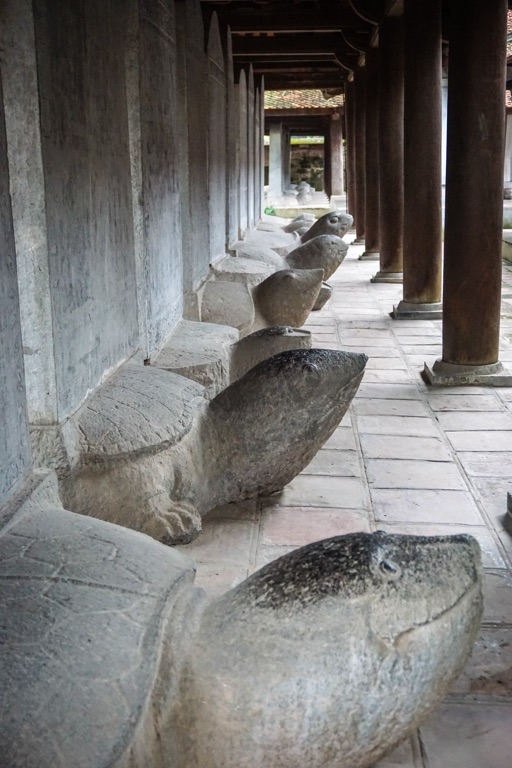Văn Miếu Quốc Tử Giám, also known as the Temple of Literature, is a renowned historical site in Hanoi, Vietnam. It was established in 1070 under Emperor Lý Thánh Tông of the Lý dynasty. Initially, it served as a Confucian temple, but in 1076, it became home to the Imperial Academy, Vietnam’s first national university. The site honors education and literature, with monuments and steles dedicated to scholars and academics. It is a prime example of traditional Vietnamese architecture and a symbol of the country’s dedication to education and the arts.
Lý dynasty
The Lý Dynasty, spanning from 1009 to 1225 AD, marks a significant era in Vietnamese history, characterized by its profound cultural and political developments. Founded by Lý Thái Tổ, who was originally a palace guard, the dynasty heralded a period of stability and prosperity after centuries of turmoil and fragmentation. Under the Lý rulers, Vietnam saw the establishment of a centralized bureaucratic system, the promotion of Confucianism, and significant advancements in agriculture, education, and the arts.
One of the major moments in the Lý Dynasty’s timeline was the construction of the Thăng Long capital, present-day Hanoi, in 1010 AD. This move not only symbolized the dynasty’s power but also facilitated the flourishing of Vietnamese culture and intellect. The Lý Dynasty is also renowned for the establishment of the Quốc Tử Giám, the first national university, emphasizing the importance of education and Confucian values in Vietnamese society.
Religion played a pivotal role during the Lý Dynasty, with Buddhism being the state religion. The dynasty is known for its patronage of Buddhism, evident in the construction of numerous temples and pagodas, which served as both religious and educational centers. The most notable among these is the One Pillar Pagoda in Hanoi, an architectural marvel that symbolizes a lotus flower rising out of the water, a Buddhist symbol of purity and enlightenment.
Social and daily life under the Lý Dynasty was marked by significant advancements. The agrarian economy thrived due to improvements in rice cultivation and irrigation, leading to increased stability and population growth. The dynasty also saw the development of traditional Vietnamese crafts, including silk weaving and ceramics. The Lý period was characterized by a hierarchical society structured around Confucian principles, where the family was the central unit of social life.
The Lý Dynasty was ruled by nine monarchs, with Lý Thái Tổ being the founder and Lý Chiêu Hoàng, the last ruler, who was dethroned in 1225 AD, leading to the rise of the Trần Dynasty. Notably, the dynasty included several powerful queens, such as Ỷ Lan, who was revered for her wisdom and contributions to the dynasty’s prosperity.
The Lý Dynasty’s military achievements include the successful defense against the Song and Yuan invasions, showcasing the strategic and military prowess of the Vietnamese. The Battle of Bạch Đằng River in 938 AD, although preceding the Lý Dynasty, remained a significant symbol of Vietnamese resistance and was a source of inspiration for Lý military strategies.
Originating from the Red River Delta region, the Lý Dynasty was instrumental in expanding Vietnamese territory southwards, a process known as Nam tiến, which laid the foundation for the modern Vietnamese state. This expansion was not only territorial but also cultural, integrating various ethnic groups into the Vietnamese fold.
The Lý Dynasty’s decline began in the early 13th century, culminating in the abdication of Lý Chiêu Hoàng in favor of her husband, Trần Cảnh, marking the beginning of the Trần Dynasty. Despite its fall, the Lý Dynasty left an indelible mark on Vietnamese history, culture, and society, laying the groundwork for future dynasties to build upon.

